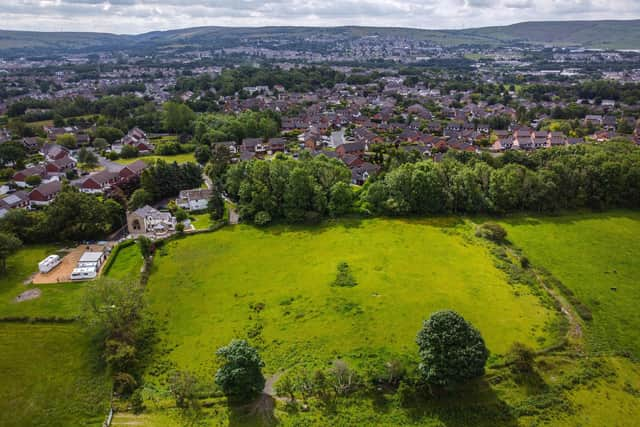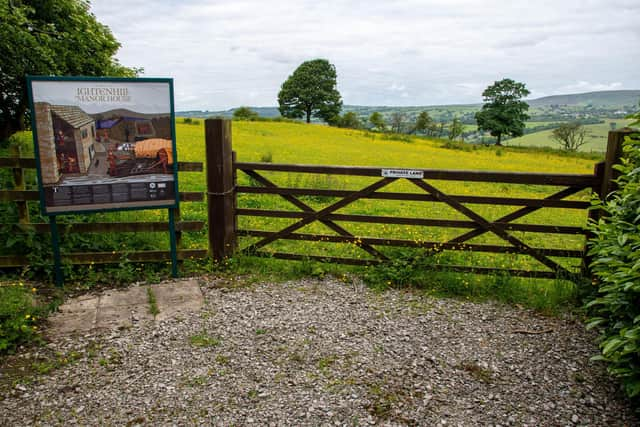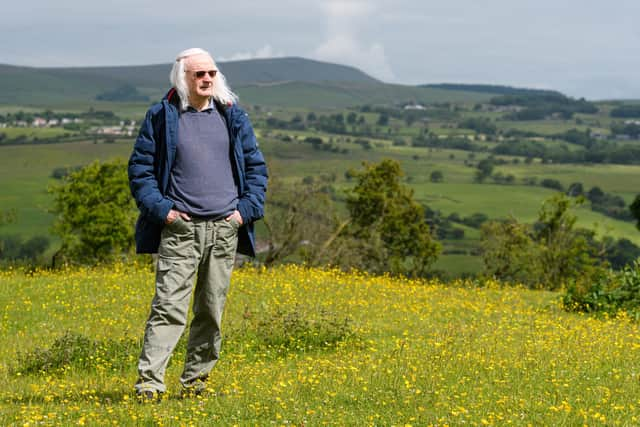Archaeological evidence unearths Burnley's lost medieval village at Ightenhill once visited by King Edward II
and live on Freeview channel 276
The field, off Helvellyn Drive, has long been known as the location of the 12th Century Ightenhill Manor House, a late Norman building occupied originally by the de Lacy family, but fresh research conducted by Pendle Archaeological Group, suggests the site may have been more extensive than first thought.
Respected Burnley historian Roger Frost and archaeologist David Taylor have conducted a reappraisal of the manor house dating from the 1180s, which also comprised a chapel, several dwellings, a large horse stud and oxen ‘vaccary’.
Advertisement
Hide AdAdvertisement
Hide AdSuch was the importance of the manor house, part of the Honor of Clitheroe, that King Edward II is thought to have visited and stayed for around a week in 1323 following the Battle of Boroughbridge.


Mr Frost said: “We have known of the existence of Ightenhill Manor House for many years but we have only recently discovered it was much more important and extensive than first thought.
"During his research, David discovered that the site was home to a huge stud for the rearing of horses, possibly for military purposes and perhaps as many as 200, as well as a facility for breeding oxen and an early iron works.
"Courts were likely held here and we think it was where the Forests of Trawden, Pendle, Rossendale and Accrington were administered from.
Advertisement
Hide AdAdvertisement
Hide Ad"We think Ightenhill is a medieval lost village right in the heart of Burnley. We know it was a sizeable village community with as many as 50 or 60 dwellings.”


Perhaps the most exciting aspect in the site’s long history came in 1323 when King Edward II is believed to have stayed at the manor house for around a week.
There is a description of 1323 when repairs were ordered at the manor house possibly in the knowledge Edward was about to stay there. The description reads: “Felling oak trees, cutting and dressing timber for posts and a “wevre” under the King’s Chamber...”
Roger added: “The king’s visit is likely to be connected to the Battle of Boroughbridge near York in which he was victorious over his cousin Thomas, Earl of Lancaster, who we believe held Ightenhill Manor House as well as Clitheroe Castle, and was the most powerful nobleman in England at the time.”
Advertisement
Hide AdAdvertisement
Hide AdThomas had married Alice, the daughter of Henry de Lacy, and thus inherited his lands. After falling out with Edward II, Thomas led a group of disgruntled barons against the unpopular king but was defeated at Boroughbridge.


"Following the battle and Thomas’ subsequent execution, Ightenhill Manor reverted back to the king. He later visited the north to assess the situation following a breakdown in law and order after Thomas’ defeat, and inspect his new properties. Ightenhill was a very wealthy property and was likely raided by Nicholas de Maulverer, the Constable of Skipton Castle,” Roger revealed.
"We don’t exactly know what the king did while he was here as none of the clerks’ itineraries have been discovered.”
Roger would now like to take the study of Ightenhill Manor further and is planning to engage the help of English Heritage and the archaeology department at the University of Central Lancashire.